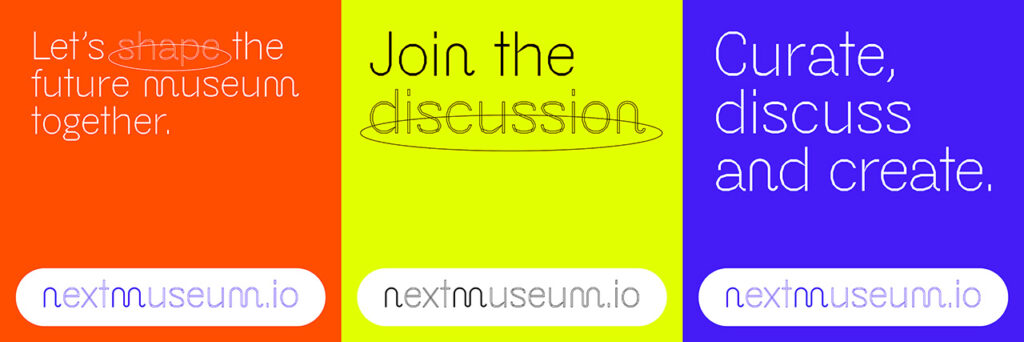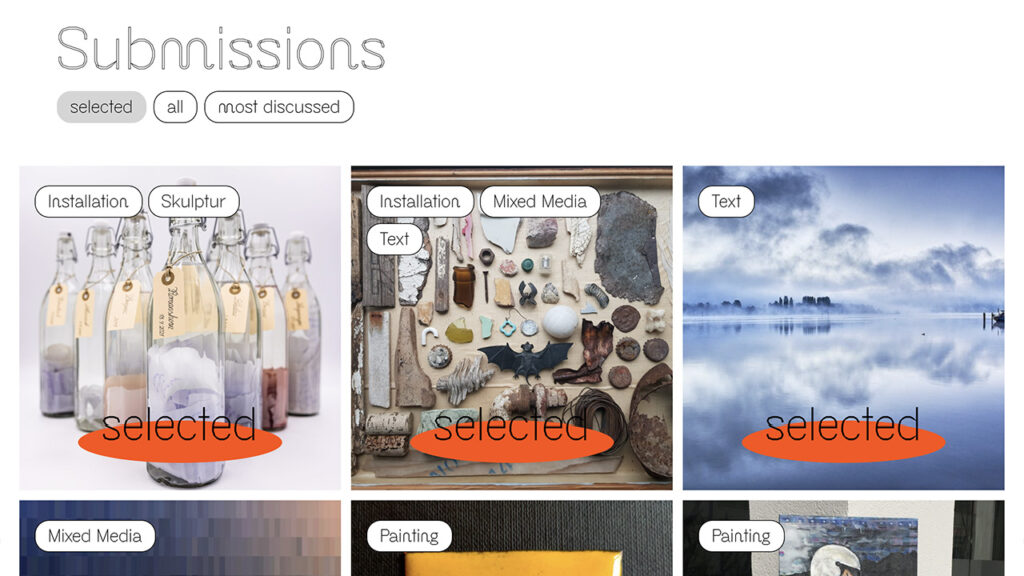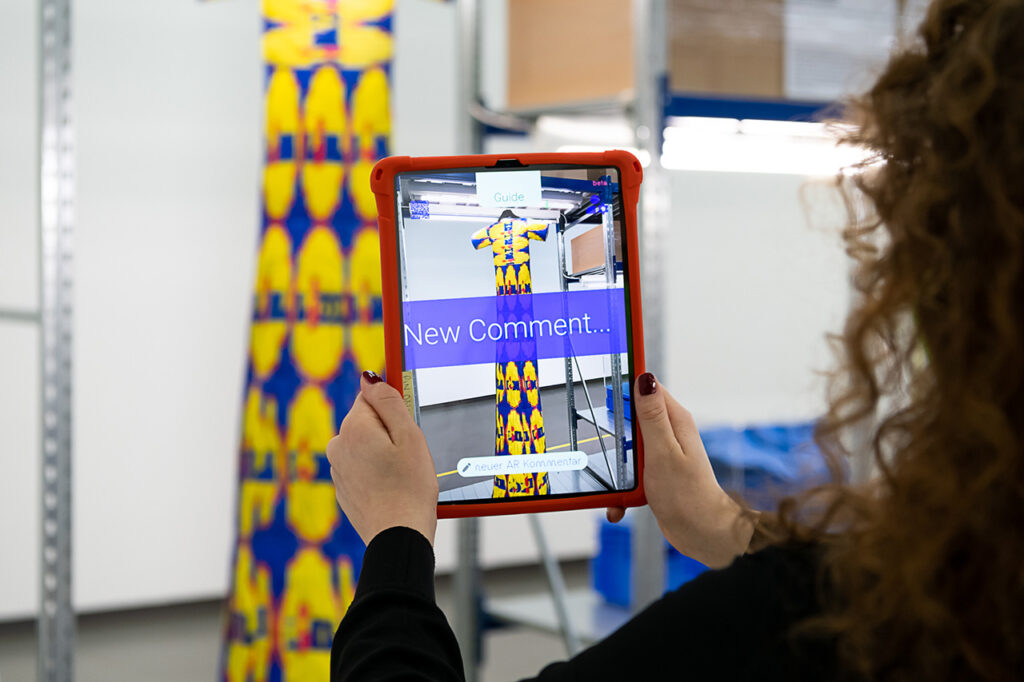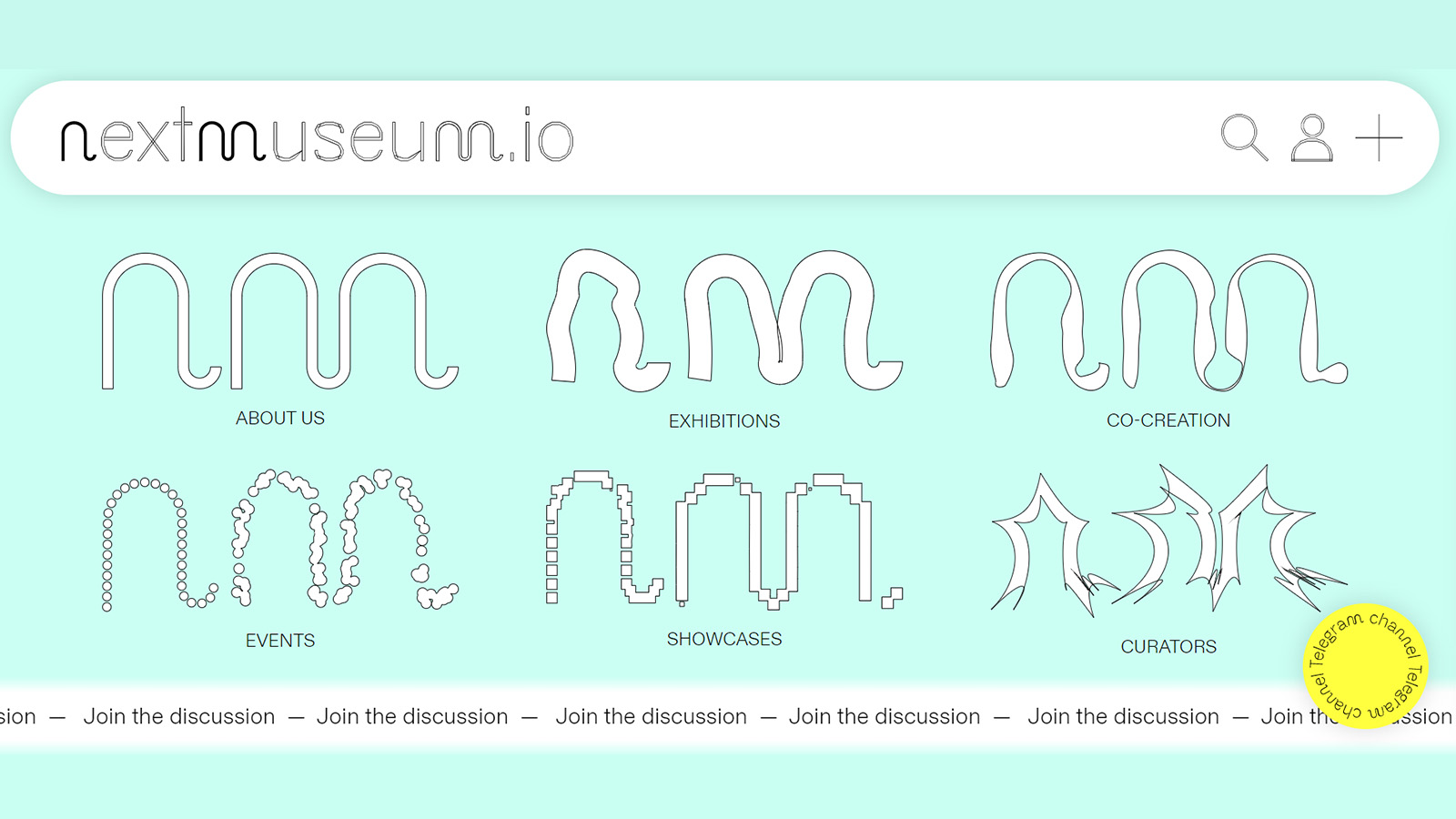That collaboration powers the museological endeavor is not fresh insight — any exhibition or program is the result of a museum’s team and external partners pulling together. But in a climate where digital has spurred communication and creation across physical divides, cultural institutions have found themselves with a whole new group of collaborators: their audience. “Users of digital platforms have long been accustomed to commenting on everything they see,” say Marina Bauernfeind and Alina Fuchte, Project Managers of nextmuseum.io. “Museums should respond to this — not only by asking visitors, but also by finding ways to let their audience have a say in their programs.”
Nextmuseum.io, then, was founded as a tool to facilitate such co-creation, based on the premise that “there is ‘a new knowledge’ outside [the institution]: the swarm intelligence,” according to the project managers. Originally launched in July 2020, the platform arrays exhibition open calls to which users can submit work or ideas, prototype designs (an AI curator, an AR chat app) seeking feedback and suggestions, and free virtual events exploring topics from XR to the metaverse. Institutions and individual creatives are invited to participate, whether by posting a project or joining a discussion.

Launched in 2020, nextmuseum.io seeks the participation of “swarm intelligence” to help curate or co-create museum exhibitions and projects. Image: nextmuseum.io
Significantly, nextmuseum.io is itself the fruit of a collaboration between NRW-Forum Düsseldorf and Museum Ulm, where Fuchte and Bauernfeind respectively work. Despite the disparate scopes of the two German venues — the former a contemporary photography museum and the latter an encyclopedic institution — the duo have found a common understanding of how digital shapes museum futures.
“Digital plays an increasingly large role for museums,” they tell Jing Culture & Commerce. “This goes far beyond websites and social media — digital strategies must include all departments from marketing to education and infrastructure to collections.”

The platform invites users to submit work or ideas to exhibition open calls and prototype designs. Image: Submissions for the Zeppelin Museum’s Beziehungsstatus exhibition / nextmuseum.io
To that end, nextmuseum.io has lately undergone a revamp in response to, of course, user input. A new look accompanies refreshed accessibility, as well as new features from a curators’ corner, where upcoming and established curators can upload their profile and network, to a community board, where matchmaking between potential collaborators can happen directly. Timely enough, this relaunch comes as museums, in the wake of a digital acceleration, are increasingly tapping crowdsourcing to build out archives and exhibitions. Here, Fuchte and Bauernfeind share more about nextmuseum.io’s renewed push toward collaboration and co-creation.
How did users respond to the first iteration of nextmuseum.io?
We were overwhelmed by the enormous engagement of the users when we launched nextmusuem.io. For instance, one of our first open calls, Welcome To Paradise, received over 400 submissions from participating artists. Our main discussion channel includes around 500 members. The community intensely discussed the topics of the open calls as well as the incoming submissions, which resulted in onsite exhibitions that were different than usual and highly benefited from the swarm intelligence. But we also received feedback that some platform features are hard to understand or that even more tools for collaboration were needed.
Could you highlight any projects that were realized with help from nextmuseum.io?
We have featured over 20 open calls on our platform by now — from NRW-Forum Düsseldorf and Museum Ulm, but also other institutions and freelance curators. Most of them have already been transformed into collaborative exhibitions on view in museums and galleries in Germany, Austria, and Croatia, or published as a digital exhibition or print publication. Moreover, we have organized more than 60 digital events with various experts on trending topics surrounding the museum of the future like NFT, AI, XR, sustainability, and many more.

The interactive ARt Chat app, which first appeared on nextmuseum.io as a prototype, has since launched at NRW-Forum and Museum Ulm. Image: nextmuseum.io
How did you go about collecting user feedback for the relaunch?
After one year of operation and many accomplished projects, we took time to look at the platform and ask ourselves which features have proven successful, what we needed to change, and what is still missing. Therefore we started a survey among people that already use our platform, but also other potential target groups that we haven’t reached yet. Some questions focussed on the usability of the platform, their experience with collaborative practices, and demographic data, but we were also interested in the big questions like, “What do you wish for the museum of the future in terms of access, communication and relationship to the audience?”
The ongoing exchange of experience and knowledge with colleagues and experts from the field is also very valuable to us. Next to numerous virtual coffees and interesting talks, we organized a two-day workshop to analyze the platform, determine happy and pain points, and finally develop a strategy for the relaunch with our agency.
In your observations, how have the past two pandemic years accelerated this exchange and collaboration?
The idea of nextmuseum.io was born before the pandemic, but the concrete project work and the launch fell right in the middle of it. We have experienced that during lockdowns, museums were forced to be bold and eager to experiment. Moreover, employees and visitors of the museum got familiar with diverse video platforms and collaborative tools that can easily be used from home. Not all approaches will prevail in the long term, but that’s okay. In order to develop good genuinely digital formats, you have to try things out a bit.



